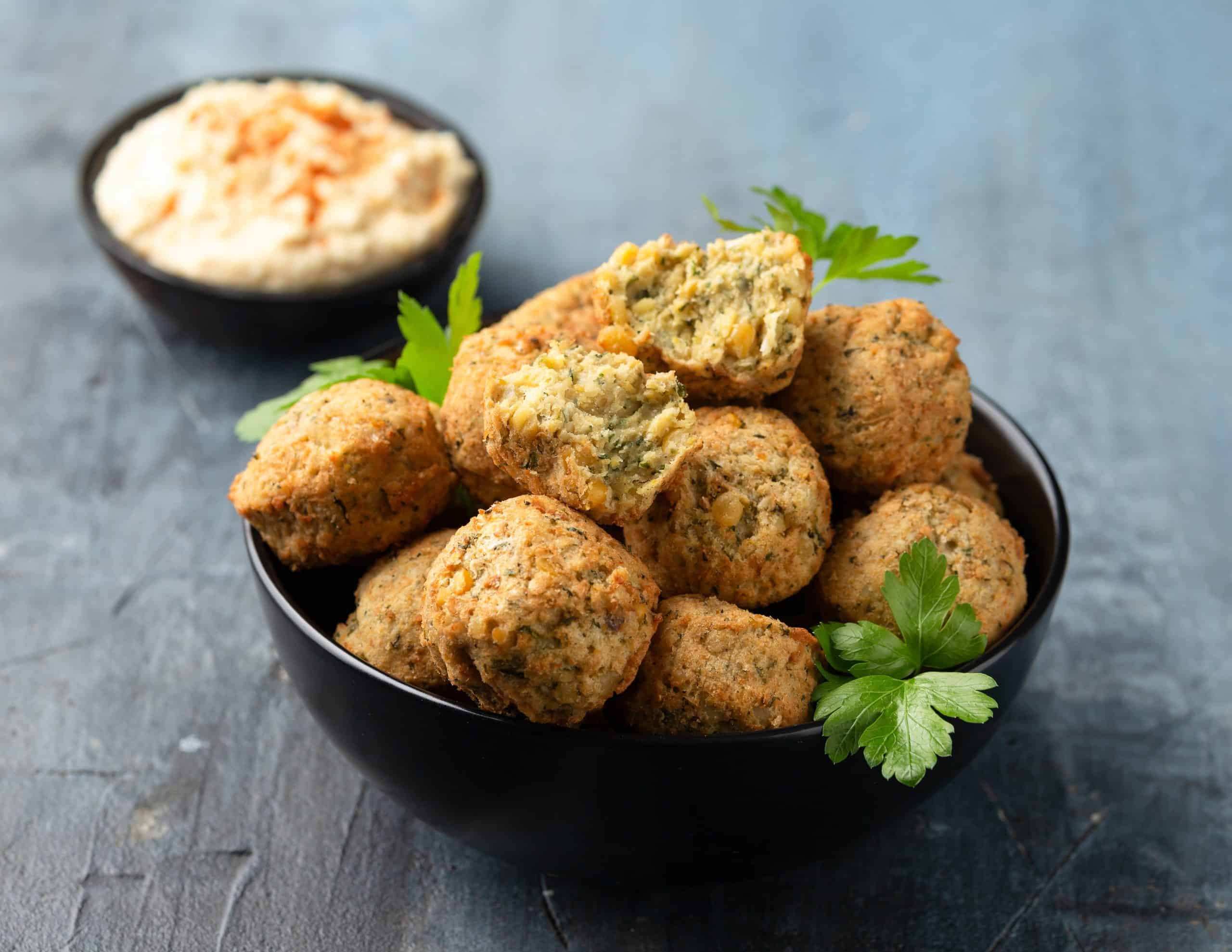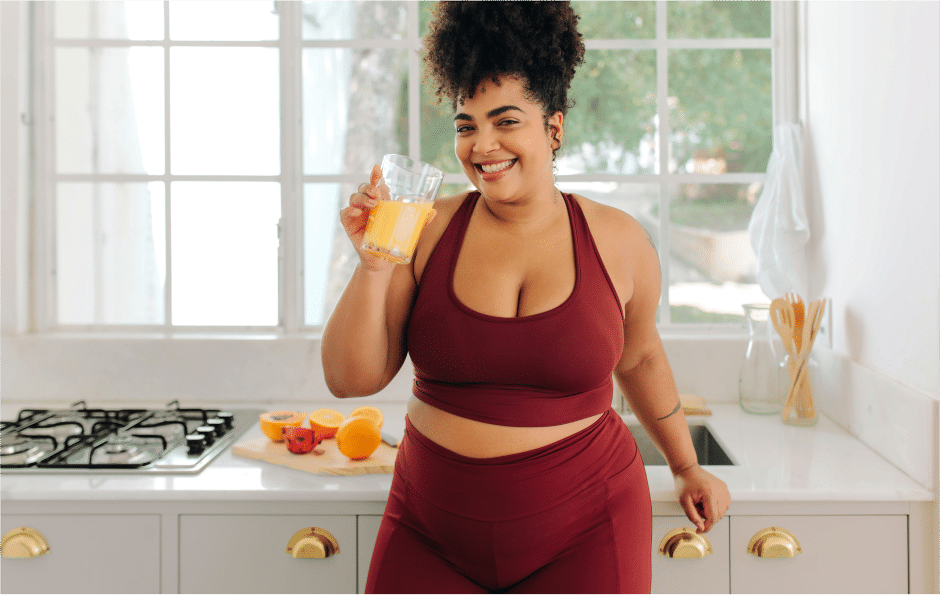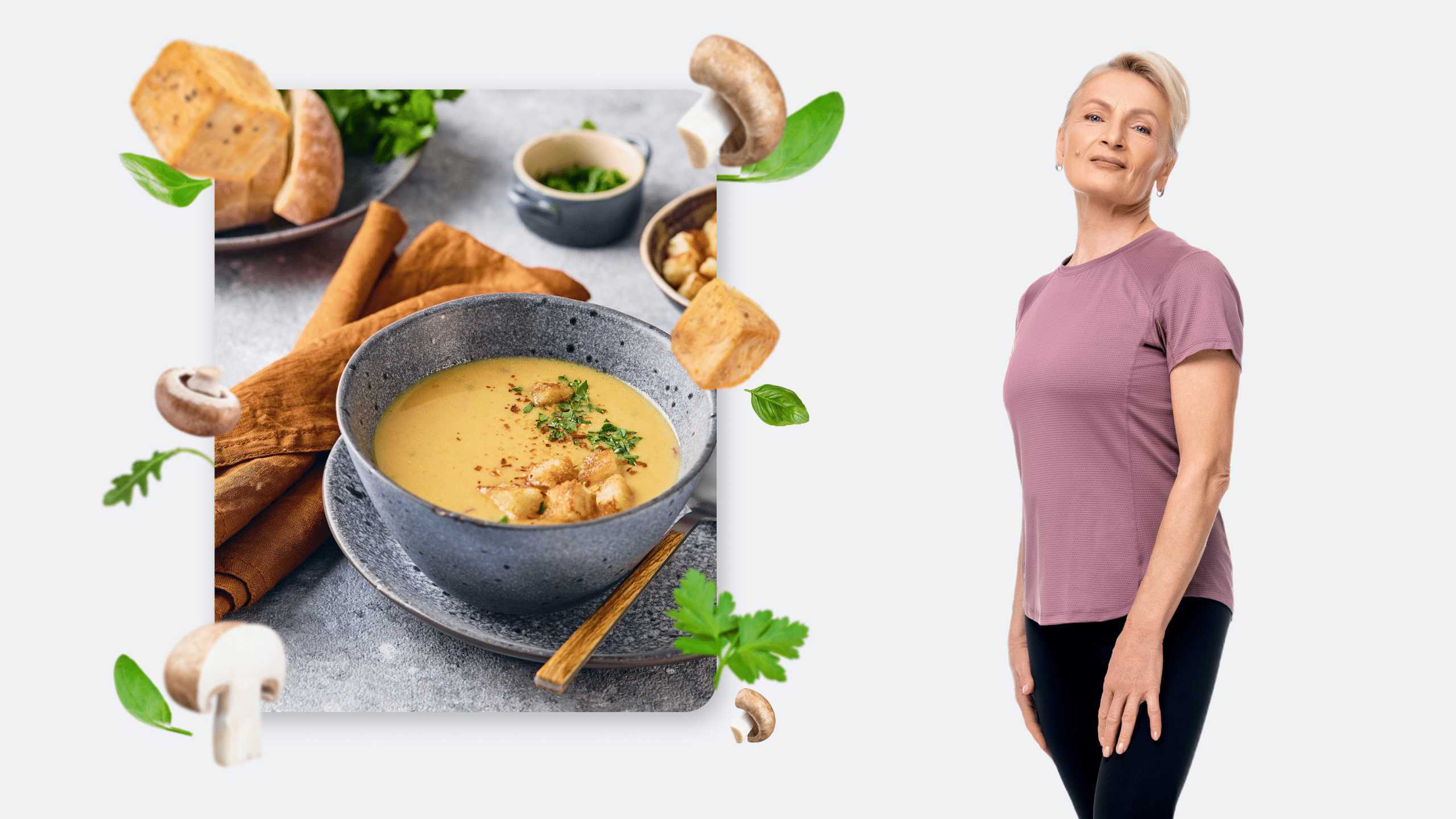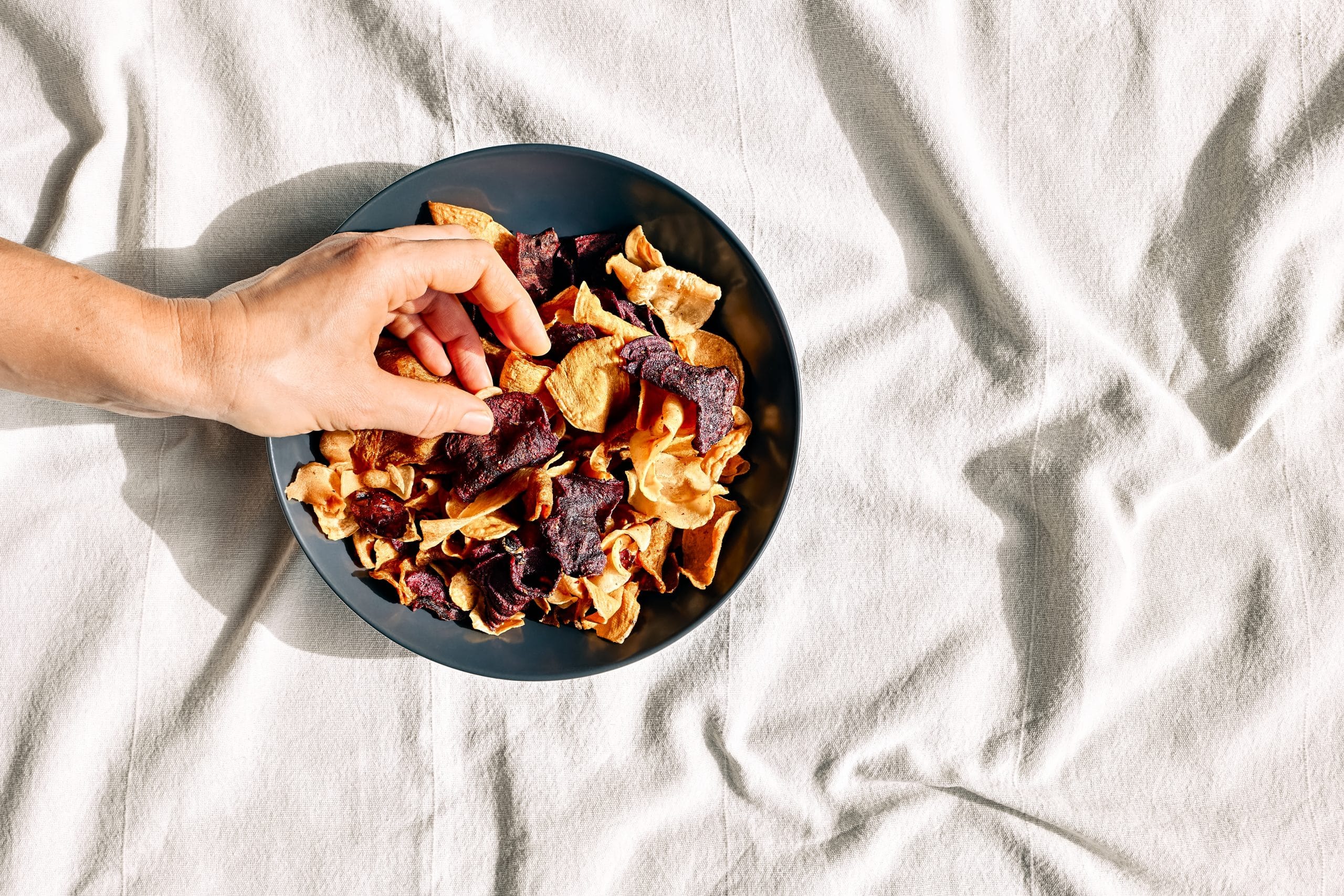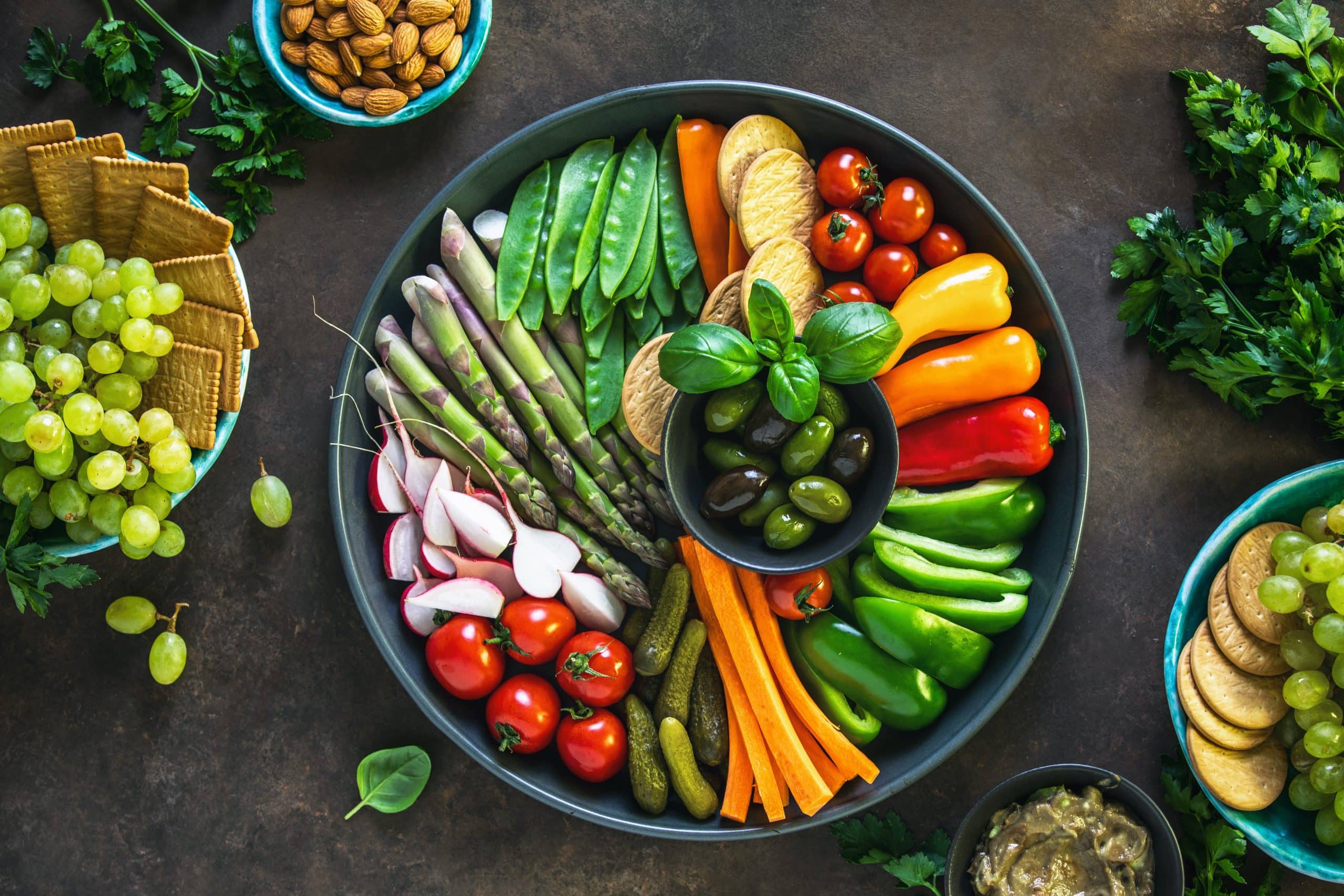The Middle East is known for a rich culinary tradition that has given us countless delightful dishes. Falafel is right up there among the best of them.
It may be hard to pinpoint exactly what makes this humble chickpea fritter such a worldwide favorite, but its unique texture, deep flavors, and versatility surely have a lot to do with it.
Nutrient-dense chickpeas and aromatic spices come together to create this crispy-on-the-outside, soft-on-the-inside delicacy. Feel free to experiment with a variety of sauces, wraps, or even salads, turning this humble street food into a gourmet experience right in your own kitchen.
Stay with us as we guide you, step-by-step, to crispy goodness that’s not only delicious but also packed with plant-based protein.
What Are The 2 Types of Falafel?
Traditionally, there are two types of falafel: the Egyptian version and the Levantine version. The main difference between these versions is the type of beans used – chickpeas for the Egyptian version and fava beans for the Levantine one.
Fava beans bring a slightly earthier flavor to the dish, while chickpeas tend to have a milder taste. However, both versions are equally delicious and popular in their respective regions.
If you struggle to even flirt with the idea of giving up your favorite foods or working out till your legs give way – BetterMe app is here to breathe a fresh perspective into the way you view the weight loss process! Check out the app and experience the fun side of fitness and dieting with BetterMe!
What Are Vegan Falafels Made Of?
Vegan falafels are made primarily of chickpeas, which are soaked overnight and then ground into a coarse mixture.
The chickpea base is then blended with a vibrant mix of fresh herbs such as parsley, cilantro, and mint, adding lush green hues and aromatic undertones to the falafels.
Essential seasonings include garlic, onions, cumin, coriander, and salt, which infuse the mixture with a burst of flavor.
Additionally, a small amount of flour is used as a binder to hold the mixture together. Once these ingredients are combined, the mixture is shaped into small balls or patties and deep-fried until golden brown and crisp.
No cooking or boiling of chickpeas is necessary before grinding in a vegan falafel recipe. A vegan falafel recipe with canned chickpeas, for example, means the peas are soft enough to blend without boiling and still have the same delicious result.
The end result is a delicious, protein-rich vegan snack that can be enjoyed on its own or in a sandwich or wrap.
Why Can’t I Use Canned Chickpeas for Falafel?
Canned chickpeas are a convenient pantry staple that can be used in a variety of recipes, but they may not be the best choice for making falafel.
While canned chickpeas do save time and effort as they are already cooked, they tend to have a higher water content which can result in a wetter falafel mixture.
This makes it challenging to form the mixture into balls or patties, and can also result in a soggy texture.
In addition, canned chickpeas may not have the same level of flavor as dried chickpeas that are soaked overnight.
With this in mind, if you want to achieve that perfect crispy-on-the-outside, soft-on-the-inside falafel texture, it’s recommended to use dried chickpeas in your recipe.
That said, even the best vegan falafel recipe can use canned chickpeas in a pinch, as long as you drain and rinse them well before using.
Read more: Vegan Dumplings – A Taste of Compassion In Every Bite
What Can I Serve With My Vegan Falafel?
One of the best things about falafel is its versatility. It can be enjoyed as a quick, on-the-go snack or transformed into a satisfying meal.
Here are a few ideas for serving your homemade vegan falafels:
- In a pita sandwich: Stuff your falafels into warm pita bread, along with some fresh veggies and tahini sauce for a classic street food experience.
- In a wrap: For a lighter option, wrap your falafels in lettuce leaves or collard greens for a low-carb and gluten-free alternative.
- On top of a salad: Add some protein to your salad by topping it with falafels. You can also use your favorite salad dressing or hummus as a dip for your falafels.
- With a side of rice: Serve your falafels on a bed of fluffy basmati rice, drizzled with tahini sauce and topped with chopped herbs for a complete and satisfying meal.
- In a burger bun: Turn your falafels into a plant-based burger by placing them in a bun with all your favorite toppings.
- With dipping sauces: Experiment with different sauces like tzatziki, hummus, or harissa to add even more flavor to your falafels.
The possibilities are endless when it comes to serving vegan falafel.
Check out our 7-Day Vegan Meal Plan to see how best to incorporate falafels into your weekly meal prep and discover more plant-based meal ideas.
Simple Vegan Falafel Recipe (2)
Having a healthy falafel recipe in your repertoire is a game-changer, especially if you’re transitioning to a plant-based diet or looking for creative ways to add more plant-based protein to your meals.
Here’s a simple and delicious vegan falafel recipe with canned chickpeas that you can make at home:
Ingredients
- 1 15-ounce can of chickpeas (rinsed, drained and patted dry)
- ⅓ cup chopped fresh parsley (or sub cilantro)
- 4 cloves garlic, minced
- 2 medium shallots (minced // 2 shallots yield ~ 3/4 cup or 65 g // or sub white onion)
- 2 Tbsp raw sesame seeds (or sub finely chopped nuts, such as pecans)
- 1 ½ tsp cumin (plus more to taste)
- ¼ tsp each sea salt and black pepper (plus more to taste)
- 1 healthy pinch each cardamom and coriander (optional)
- 3-4 Tbsp all-purpose flour (or sub oat flour or gluten-free blend with varied results)
- 3-4 Tbsp avocado oil for cooking (or sub any neutral oil with a high smoke point)
- Panko bread crumbs for coating (optional // gluten-free as needed)
Instructions
- Add chickpeas, parsley, garlic, shallot, sesame seeds, cumin, salt and pepper to a food processor and mix/pulse to combine, scraping down sides as needed until thoroughly combined.
- Add flour 1 Tbsp at a time and pulse/mix to combine until no longer wet and you can mold the dough into a ball without it sticking to your hands
- Scoop out rounded Tablespoon amounts and gently form into small discs using your hands. If they aren’t holding together, return the mixture to the food processor and continue mixing/folding.
- Optional: Coat in panko bread crumbs for a crispier crust (highly recommended!).
- Heat a large skillet over medium heat and add enough oil to generously coat the pan – about 2-3 Tbsp.
- Once hot, add falafel patties – only as many as will fit comfortably in the pan at a time – and cook for 3-4 minutes on each side or until deep golden brown.
- Repeat until all falafel is cooked
- Serve the falafels warm with your choice of sides or toppings, such as pita bread, hummus, tahini sauce, and fresh vegetables.
Servings: 12 servings
Nutrition per serving: 1 falafel | Calories: 91 | Carbohydrates: 8.1 g | Protein: 2.2 g | Fat: 5.8 g | Saturated Fat: 0.5 g | Polyunsaturated Fat: 1.04 g | Monounsaturated Fat: 2.9 g | Trans Fat: 0 g | Cholesterol: 0 mg | Sodium: 87 mg | Potassium: 77 mg | Fiber: 1.6 g | Sugar: 1.5 g | Vitamin A: 148 IU | Vitamin C: 3.34 mg | Calcium: 18.79 mg | Iron: 0.76 mg
Turn this into a vegan falafel recipe baked by following these simple steps:
- Preheat your oven to 375 degrees F (190C) and line a baking sheet with parchment paper.
- Shape the falafel mixture into small balls or patties, then place them on the prepared baking sheet.
- Brush each falafel with some oil before placing in the oven.
- Bake for 25 minutes, flipping halfway through, or until golden brown and crisp on the outside.
- Serve warm with your choice of sides or toppings.
The baked falafel with canned chickpeas isn’t just healthier; it’s also a great time-saver as you can cook all the falafels at once, without having to wait for each batch to finish frying.
Not to mention, baking yields a crispier and less greasy falafel.
Check out our Hummus Bowl recipe guide for a dip that pairs perfectly with your homemade vegan baked falafels.
Whether you’re a workout beast or just a beginner making your first foray into the world of fitness and dieting – BetterMe has a lot to offer to both newbies and experts! Install the app and experience the versatility first-hand!
FAQs
What Happens If You Forget To Soak Chickpeas for Falafel?
If you forget to soak your chickpeas overnight, don’t worry! You can use this quick soaking method instead:
- Rinse the chickpeas and place them in a pot with enough water to cover them by at least 2 inches.
- Bring the water to a boil, then turn off the heat and let the chickpeas soak for 1 hour.
- After 1 hour, drain and rinse the chickpeas before using them in your falafel recipe.
This method should yield similar results to overnight soaking, but for optimal texture and flavor, it’s still recommended to soak the chickpeas overnight if possible.
Using canned chickpeas is also an option if you don’t have time to soak and cook dried chickpeas. Just make sure to rinse and drain them very well before using in your falafel recipe.
Can I Freeze My Homemade Vegan Falafels?
Yes, you can freeze your homemade vegan falafels! After cooking, let them cool completely before placing them in an airtight container or freezer-safe bag.
To reheat, simply thaw the falafels in the fridge overnight and then heat them up in a skillet over medium heat until heated through. You can also reheat them in the oven at 375 degrees F (190C) for about 10-15 minutes.
Falafels can be stored in the freezer for up to 3 months.
What Bacteria Is In Falafel?
Recent reports have highlighted an outbreak of E. coli O121, a type of bacteria, linked to certain frozen falafel products in 2022. The Centers for Disease Control and Prevention (CDC) and the Food and Drug Administration (FDA), along with state and local partners, investigated these multistate outbreaks.
According to these sources, the bacteria found in the falafel were closely related to bacteria from sick people, suggesting that people likely got sick from eating the contaminated frozen falafel (3, 4).
In some cases, Staphylococcus aureus has also been identified in falafel. These bacteria are a common cause of foodborne illnesses and can produce toxins that lead to food poisoning (1, 5).
Bacteria can be present in falafel due to improper handling or contamination during the manufacturing process. It’s also possible for bacteria to survive if the falafel is not cooked thoroughly, as both E. coli and Staphylococcus aureus are killed by heat. Therefore, it’s crucial to handle food properly and cook it to the recommended internal temperature to prevent foodborne illnesses.
To reduce the risk of bacterial contamination, always make sure to properly rinse and handle your ingredients, cook falafel to a safe internal temperature, and store leftovers in the fridge or freezer within two hours of cooking. If you have any products in your freezer or pantry that have been recalled, be sure to discard them.
Is Tahini Vegan Friendly?
Yes, tahini is typically considered vegan-friendly. It is a paste made from sesame seeds and does not contain any animal products. However, it’s always important to check the ingredients list as some brands may add honey or other non-vegan ingredients to their tahini.
If you are unsure, opt for a brand that specifically labels their tahini as vegan.
What Food Is Surprisingly Vegan?
One food that is surprisingly vegan is classic Oreo cookies. Despite their creamy filling, Oreo cookies do not contain any animal products, making them a surprisingly vegan snack.
That said, while Oreos are technically vegan as they do not contain any animal-derived ingredients, they are manufactured in a facility that processes milk, which might be a concern for some strict vegans or those with allergies due to potential cross-contamination.
Furthermore, the flavored, fudge-coated Oreos are not vegan as they contain milk products. Always read labels and decide what level of animal product interaction you’re comfortable with in your diet.
Other surprisingly vegan foods include dark chocolate, most chips and crisps, some types of bread, and many canned soups.
The Bottom Line
Whether you choose to fry or bake them, falafel is a versatile dish that can be served as a main course or enjoyed as part of a snack or meal.
With the right ingredients and techniques, you can easily make your own vegan falafel at home. Remember to always handle food properly and cook it to a safe internal temperature to prevent foodborne illnesses.
DISCLAIMER:
This article is intended for general informational purposes only and does not serve to address individual circumstances. It is not a substitute for professional advice or help and should not be relied on for making any kind of decision-making. Any action taken as a direct or indirect result of the information in this article is entirely at your own risk and is your sole responsibility.
BetterMe, its content staff, and its medical advisors accept no responsibility for inaccuracies, errors, misstatements, inconsistencies, or omissions and specifically disclaim any liability, loss or risk, personal, professional or otherwise, which may be incurred as a consequence, directly or indirectly, of the use and/or application of any content.
You should always seek the advice of your physician or other qualified health provider with any questions you may have regarding a medical condition or your specific situation. Never disregard professional medical advice or delay seeking it because of BetterMe content. If you suspect or think you may have a medical emergency, call your doctor.
SOURCES
- Current pathogenic Escherichia coli foodborne outbreak cases and therapy development (2017, link.springer.com)
- Easy Vegan Falafel (Freezer Friendly!) (n.d., minimalistbaker.com)
- Investigation Details | E. coli Outbreak Linked to Frozen Falafel (2022, cdc.gov)
- Outbreak Investigation of E. coli O121:H19 Frozen Falafel (October 2022) | FDA (2022, fda.gov)
- Staphylococcus aureus and Staphylococcal Food-Borne Disease: An Ongoing Challenge in Public Health (2014, hindawi.com)
